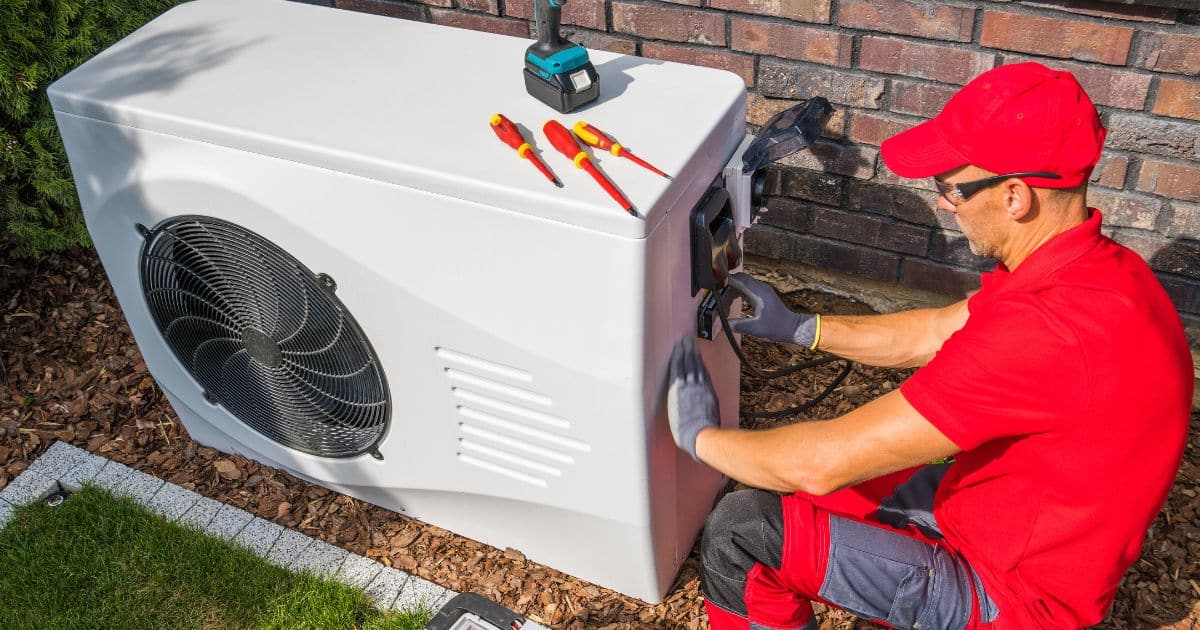CFM, called Cubic Feet per Minute, is a key measurement used to quantify the volume of air moved by something, such as an air compressor or cooling fan, in one minute.
Understanding CFM will help you choose the right equipment for various applications, from home heating and cooling systems to industrial processes. Whether you’re a homeowner, a hobbyist, or a professional in HVAC, grasping the basics of CFM can significantly impact your choices and their outcomes.
In essence, CFM is all about airflow. Knowing what CFM is and how it affects HVAC efficiency can be a game changer in cooling and heating your space just right. Professional heating and cooling companies are here to help you learn so you can do right by your system.

How does CFM work?
CFM measures how much airflow a device can move or circulate within a minute. It is a crucial metric in HVAC systems as it directly affects how efficiently a space can be cooled or heated.
The concept behind CFM is relatively simple: the higher the CFM rating of a device, such as a fan or air compressor, the more air it can move within a given timeframe. This is vital for ensuring that air circulates effectively throughout a room or a system, improving ventilation, controlling temperatures, and even reducing humidity levels.
The importance of CFM in HVAC systems
An HVAC system with an appropriate CFM rating ensures that air is circulated and distributed evenly throughout the space, achieving an optimal balance of temperature and humidity levels. This not only creates a comfortable living or working environment but also contributes to the efficiency and longevity of the HVAC system.
By matching the CFM to the size and needs of the space, energy consumption is optimized, leading to potential savings on utility bills. Furthermore, adequate airflow helps filter out contaminants and allergens from the air, contributing to better indoor air quality and overall health.
In sum, understanding and correctly applying CFM measurements in HVAC systems is pivotal for performance, comfort, and cost-effectiveness.
The relationship between CFM, air quality, and health
The relationship between CFM, air quality, and health is intricate and significant. Proper airflow, as measured in CFM, is critical in removing or diluting airborne pollutants within indoor spaces.
When an HVAC system moves air efficiently, it filters out potential contaminants like dust, mold spores, and chemical vapors, which can adversely affect health. High-quality air, which is unburdened by excessive pollutants, helps prevent respiratory problems, allergies, and other health issues.
Thus, ensuring that an HVAC system is tailored to move an adequate volume of air for the space it serves not only optimizes energy usage and comfort but also supports a healthier indoor environment. This direct correlation underscores the importance of selecting HVAC components with the right CFM ratings to maintain excellent air quality and promote well-being.
CFM and energy efficiency
By understanding CFM and its essential role in HVAC, you can make informed choices that not only benefit your home or business but also the environment. By selecting equipment with appropriate CFM ratings, you can maximize energy efficiency, reduce waste and save money in the long run.
When it comes to selecting HVAC components, bigger isn’t always better. A higher CFM rating than needed can lead to excess energy consumption, increased wear and tear on the system, and unnecessary costs. On the other hand, a lower CFM rating than required may result in inadequate air circulation, leading to inefficient heating or cooling and potentially damage to the system.
Therefore, it is crucial to consider factors such as room size, ceiling height, insulation levels, and equipment placement when determining the appropriate CFM rating for your specific needs. Consulting with an HVAC professional can also help in selecting the right equipment and optimizing airflow, leading to energy savings and a more sustainable approach to heating and cooling.
